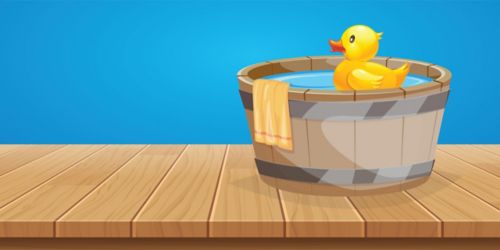St. Jude Family of Websites
Explore our cutting edge research, world-class patient care, career opportunities and more.
St. Jude Children's Research Hospital Home

- Fundraising
St. Jude Family of Websites
Explore our cutting edge research, world-class patient care, career opportunities and more.
St. Jude Children's Research Hospital Home

- Fundraising
Proteins: Playing with molecular rubber duckies

Proteins being able to execute their biological function are dependent upon ligands that bind in specific ways to the protein. But protein mutations can affect water molecules within the binding site, which affects how well the ligand binds.
Proteins are everywhere – they enable virtually all aspects of life. Because proteins have vast implications for biological function or malfunction in disease, my laboratory looks at them as the flexible, hydrated entities they are.
We believe that collecting information on protein structures at biological temperatures can reveal new, more lifelike insights than are available using current approaches. These insights can help us understand proteins better and give us new ideas about how to fix proteins that misbehave.
Mother Nature has taken her time to carefully optimize the fit between a protein and a ligand so that each protein can carry out its intended function. A ligand is a molecule that transmits signals. It sends those signals by binding to a site on a target protein. The receptor on that protein can then send signals to other parts of the cell.
For optimal binding, chemical groups of proteins and ligands complement each other in terms of shape and interactions; and water molecules are strategically put in all the right places to anchor ligands in protein sites.
But what if there is trouble in the molecular bathtub?
Water molecules can get splashed around the binding sites of proteins. Think of the ligands as rubber duckies – yes, that one from the bath when you were little. The bigger the waves in the tub, the more the rubber ducky floats around and topples over. This holds true for ligands binding to proteins – the more the water molecules move around, the less stable the interaction with the protein.
Such trouble is the result of changes either in the protein or the ligand. Consider a change in the shape of the protein, for instance, due to a mutation. This will cause a rippling effect on the waters within the binding site. Consequently, this changes how well the original ligand binds, and new ligands come in that better stabilize the new shape of the mutated protein site.
Ligand restrictions: being selective about what gets into the tub
Mutations are common in cancer and the development of drug resistance often renders the drug useless: it can no longer find its way into the mutated protein binding site to fix it. In the pursuit of fixing misbehaving proteins, this is an unwanted side-effect of nature’s robustness to change.
Likewise, in an unmutated protein site, changing the ligand in the course of a drug discovery campaign changes the water structure. This not only affects how well ligands bind to proteins but also which proteins they prefer to bind to.
By nature’s design, this is an elegant way for proteins to distinguish different ligands and to prefer some ligands while avoiding others.
Protein evolution: what’s in the water?
Water is key for biology. After all, life – and proteins – have evolved in water. It’s difficult to include water explicitly in the process of understanding protein function, discovering ligands or designing proteins.
There are no hard and fast rules to estimate water’s value to ligand binding. If this was not enough, we also lack appropriate experimental approaches to understand the binding contributions of individual water molecules.
So, we had to dive into the deep end to get to the bottom of this. To better understand the contribution of water, we looked at subtle changes in both protein and ligand.
Is your protein cold or warm?
In our latest work, we systematically compared an unmutated protein with a mutated one, bound to three related ligands. Superficially, these protein complexes appear unchanged.
But then we looked closer. One water molecule made all the difference.
This water molecule was kicked out by the mutated protein, leaving its water neighbors shuffling around to compensate. And as the water moves, it creates a less favorable binding site for the ligand.
At warm temperatures, we saw three protein conformations, or shapes. At very, very cold temperatures of -280F, we only saw one. Consider yourself sitting in a bathtub of this temperature – you likely have only one conformation. Brrrrr. But in a warm bath, you’ll be happily splashing about.
Ligand – protein – water: a dynamic trio.
Here’s why this discovery is important. If we’d only looked at our protein at the freezing cold temperature, we would’ve missed everything that happened at the biological temperature. But this is how almost all researchers currently look at proteins to understand and fix their function. Maybe not so cool after all.
We think that when designing molecular rubber duckies, there needs to be water in the tub. Only then will we know how they float. Just looking at water mobility alone can provide a simple assessment of unexpected changes in ligand affinity to a protein.
While the research is basic, the implications are broad. The underlying principles apply not only to cancer, but to any disease, including infections, and healthy proteins.
The results highlight that in pursuit of finding the next generation of molecular rubber ducky drugs, we need to have a pleasantly warm bath. We should also monitor dynamic water changes over time as we splash around.
We just need to make sure that we don’t get too pruny.






